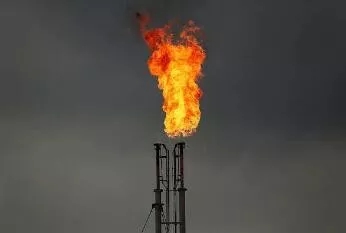According to the latest satellite data released by the World Bank's Global Gas Emission Reduction Cooperation Association (GGFR) on June 12, it is estimated that in 2018, the amount of exhaust gas burning increased by 3% year-on-year to 145 billion cubic meters, which is equivalent to the total annual gas consumption in Central and South America.
In 2018, the World Bank announced that the top 30 countries had exhausted natural gas combustion, totaling 126.2 billion cubic meters, accounting for 87%. The top five countries are Russia, Iraq, Iran, the United States and Algeria, with China ranking 17.

Owing to technical, regulatory or economic constraints, associated gas or natural gas discharged by relief valves is usually burned in oil and gas well production. According to the World Bank, the resulting carbon dioxide emissions exceed 350 million tons per year. It wastes precious resources, and unburned methane and black carbon emissions have harmful environmental impacts.
GGFR said the increase was related to an increase in U.S. crude oil production. From 2017 to 2018, U.S. crude oil production increased by 33%, and natural gas emissions from combustion increased by 48%. Satellite data show that almost all of the increased torches are concentrated in the shale oil basins of Bacon, North Dakota, Permian, Texas, and Eagle Ford. These areas developed rapidly in 2018, with Shale oil production in Bacon increasing by about 29%, Permian by 40%, and Eagle Ford by 15%.
In addition, the amount of gas released from countries struggling with conflict is also increasing.

According to GGFR, some countries use or protect related natural gas through infrastructure assumptions and technological inputs. In Angola, emissions of natural gas burned in 2018 fell by 27% from a year earlier. The associated natural gas that is likely to burn is exported through liquefied natural gas plants. Syria's natural gas burning has fallen by 42%, suggesting that more normal oil field operations have been restored after the ongoing conflict.
GGFR is composed of governments, oil companies and international agencies, which are committed to ending conventional natural gas exhaust combustion in oil production bases around the world. The National Oceanic and Atmospheric Administration and GGFR worked with the Colorado Mining School to develop combustion estimates based on observations from advanced sensors on a satellite launched in 2012.

